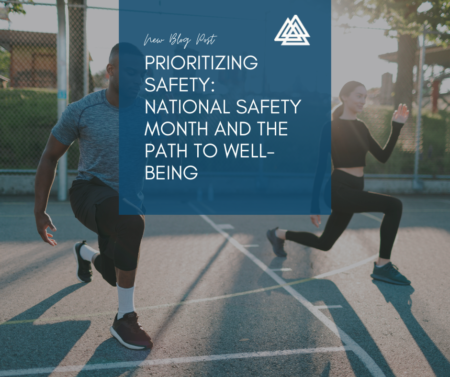 June is National Safety Month, a time dedicated to highlighting the importance of safety in our daily lives. Initiated by the National Safety Council, this month-long observance aims to raise awareness about the leading causes of preventable injuries and deaths and to promote safety practices at home, work, and in our communities. By prioritizing safety, we pave the way to a healthier, more secure, and overall well-being for everyone.
June is National Safety Month, a time dedicated to highlighting the importance of safety in our daily lives. Initiated by the National Safety Council, this month-long observance aims to raise awareness about the leading causes of preventable injuries and deaths and to promote safety practices at home, work, and in our communities. By prioritizing safety, we pave the way to a healthier, more secure, and overall well-being for everyone.
Understanding National Safety Month
National Safety Month is not just about reducing accidents; it’s about fostering a culture of safety that permeates every aspect of our lives. The focus areas often include:
- Workplace Safety
- Road Safety
- Home Safety
- Community Safety
Each week of June typically highlights different safety themes, encouraging us to take proactive steps in preventing injuries and ensuring the well-being of ourselves and those around us.
Workplace Safety
Workplace injuries and illnesses can have severe consequences for employees and employers alike. Creating a safe working environment is essential for productivity and morale. Key strategies include:
- Ergonomic Improvements: Adjust workstations to reduce strain and prevent musculoskeletal disorders.
- Safety Training: Regularly train employees on safety protocols, emergency procedures, and the proper use of equipment.
- Protective Gear: Ensure that all employees have access to and use appropriate personal protective equipment (PPE).
- Safety Audits: Conduct regular inspections and audits to identify and mitigate potential hazards.
Road Safety
Road safety is a critical concern, with traffic accidents being a leading cause of injuries and fatalities worldwide. Enhancing road safety can be achieved through:
- Defensive Driving Courses: Encourage drivers to take courses that teach defensive driving techniques and accident prevention.
- Regular Vehicle Maintenance: Ensure that vehicles are regularly serviced and maintained to prevent breakdowns and accidents.
- Safe Driving Practices: Promote the use of seat belts, avoiding distractions (such as texting), and adhering to speed limits.
- Awareness Campaigns: Support campaigns that raise awareness about the dangers of drunk driving and driving under the influence of substances.
Home Safety
Our homes should be our sanctuaries, but they can also harbor hidden dangers. Simple measures can significantly enhance home safety:
- Fire Safety: Install smoke detectors, maintain fire extinguishers, and create an emergency evacuation plan.
- Fall Prevention: Remove tripping hazards, install grab bars in bathrooms, and ensure proper lighting in all areas.
- Childproofing: For families with young children, use safety gates, cabinet locks, and outlet covers to prevent accidents.
- Poison Control: Store chemicals, medications, and cleaning supplies out of reach of children and pets.
Community Safety
Community safety encompasses a broad range of issues, from public health to emergency preparedness. Strengthening community safety can involve:
- Neighborhood Watch Programs: Participate in or start a neighborhood watch program to keep an eye on each other’s properties and report suspicious activities.
- Disaster Preparedness: Educate community members on how to prepare for natural disasters, including creating emergency kits and evacuation plans.
- Public Health Initiatives: Support public health campaigns that promote vaccinations, disease prevention, and healthy living.
- Safe Public Spaces: Advocate for well-lit, clean, and safe public spaces for recreation and social activities.
The Path to Well-Being
Prioritizing safety is more than just preventing accidents; it’s about creating environments where people can thrive without fear of harm. A commitment to safety nurtures a sense of security and well-being, allowing individuals to focus on living healthier, happier lives.
Here are some tips for integrating safety into your daily routine:
- Stay Informed: Keep up-to-date with the latest safety guidelines and best practices from reputable sources.
- Lead by Example: Model safe behavior for those around you, whether at home, work, or in your community.
- Engage and Educate: Share safety knowledge with family, friends, and colleagues to foster a collective commitment to safety.
- Be Proactive: Regularly assess your environment for potential hazards and take steps to address them before accidents occur.
National Safety Month is a reminder that safety is a continuous journey that requires vigilance, education, and proactive measures. By prioritizing safety, we not only protect ourselves and our loved ones but also contribute to a culture of well-being and security. This June, take the time to assess your surroundings, implement safety practices, and commit to making safety a top priority in every aspect of your life. Together, we can create a safer, healthier world for all.
